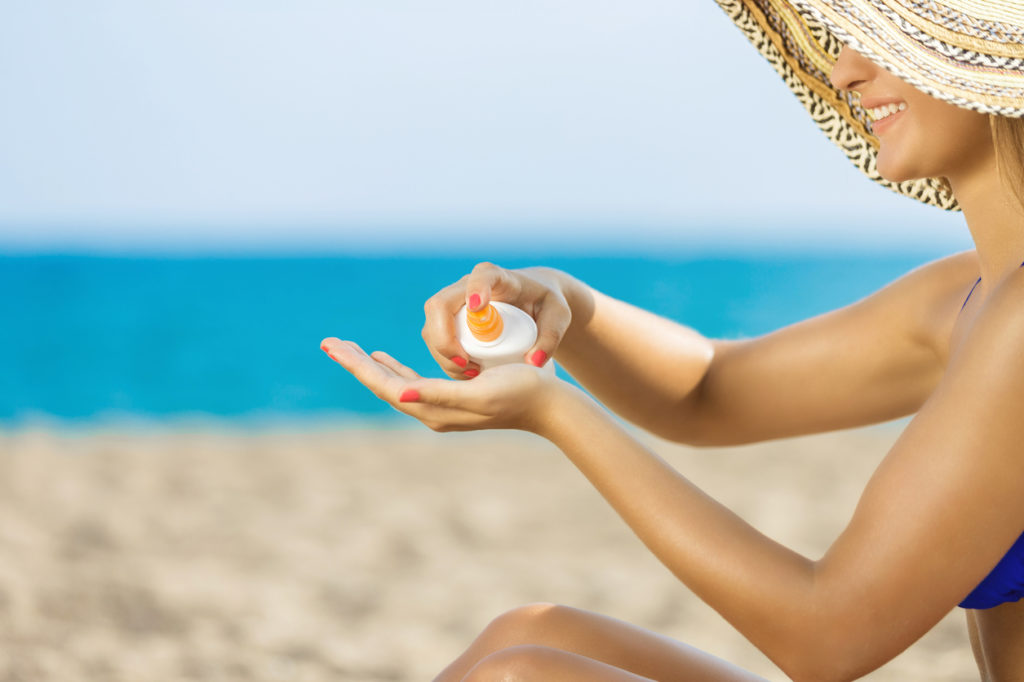In partnership with SA’s top medical aesthetic companies
South Africans are active people who love the outdoors, which is not surprising as we have one of the sunniest climates in the world. The flipside is, however, that we also have among the highest rates of skin cancer in the world, thanks in part to the hole in the Earth’s ozone layer, which, in summer, stretches up from Antarctica right up to South Africa, allowing dangerous UV rays to affect our skins.
When the skin is struck by UV radiation the longer wave UVA rays are able to penetrate into the skin’s dermal layer. The more exposure, the more damage occurs, and these rays are in fact able to penetrate right into the nuclei of our skin cells, damaging and altering the DNA, resulting in skin cancers.
The UVB rays, which are the shorter, aggressive rays, strike the surface of the skin, causing burning, which is also extremely harmful. Many people don’t realise that burns from the sun are equally damaging as burns from boiling water or from a stove plate. Burns from the sun can also result in blistering and weeping wounds in extreme cases. The skin undergoes the same trauma, and does not necessarily recover to its original state. This is when pre-mature ageing, skin laxity and uneven pigmentation occurs. While this may not sound so bad at the time, the problem comes a decade or two down the line when the long term effects start becoming visible on the skin.
Another scary fact is that UVA can actually penetrate through glass, such as windows, and for this reason, you should be protecting your skin come rain or shine.
During the holidays, while spending time socialising around the pool and braai, or enjoying an off-road mountain biking adventure, we might end up having too much fun in the sun and suffer the painful consequences. Sound familiar?
However, if we follow good sun protection habits, we can enjoy our beautiful summer weather without any of the downside.
1. Be wise about when and how long you spend outdoors. Avoid the sun between 11am and 3pm, when it is directly overhead. And don’t stay out there for longer than an hour if you can avoid it.
2. Really focus on sun protection – wear protective clothing with tightly woven fabrics; wear a hat and wraparound sunglasses with certified UV 400 and polarised lenses (to help prevent future cataracts or macular degeneration); and make sure the kids wear UV protective body suits and hats.
3. Apply a good-quality sunscreen
4. Make sure you apply your sunscreen correctly, and don’t forget those sensitive areas that are so often forgotten:
- Your ears, including the tips
- The back of your neck, backs of your knees and arms, and your cleavage
- Your hands and feet
- Under your chin and around your hairline – women especially tend to avoid the hairline are because they don’t want to mess up their hair, but it is essential to prevent excess pigmentation and premature skin ageing.
- If you’re not wearing a hat, don’t forget the scalp and your hair parting – especially men with thinning hair. Choose a fluid-textured, clear sunscreen, such as Neostrata Sheer Physical Defense..
- Your lips and eye area: Lips are particularly vulnerable as the skin is very thin and contains no melanin, so they can burn very badly. Use a UV-protective stick for lips, and a sunscreen specially designed for use around the eye area, such as SkinCeuticals Physical Eye UV Defense SPF 50.
Pick your potion
When choosing a sunscreen, besides the quality of protection, you can encourage proper usage compliance by choosing textures that are pleasant to use and suit your skin type.
A gel sunscreen, for instance, is preferable for someone with oily skin, such as Heliocare 360 AirGel SPF50 ,or a mattifying lotion, such as Obagi Nu-Derm Sunshield Matte SPF 50.
Mineral powders are great for people who want “make-up coverage”, and if you want a matte powder finish – great for oilier skins: Heliocare Compact Oil-Free SPF 50.
If your skin tends to be drier or dehydrated, lotions and creams will always be the favourites as they also make the skin feel more comfortable. Try Lamelle Helase 50.
If you are already affected by having too much fun in the sun in your youth and are now suffering the consequences of your former actions, there are some things that you can do to try and treat some of the damage that has already occurred. Treatments such as Limelight by Cutera for sun damage and sun spots, or Laser Genesis by Cutera for skin rejuvenation can certainly help to repair some of the damage done.
